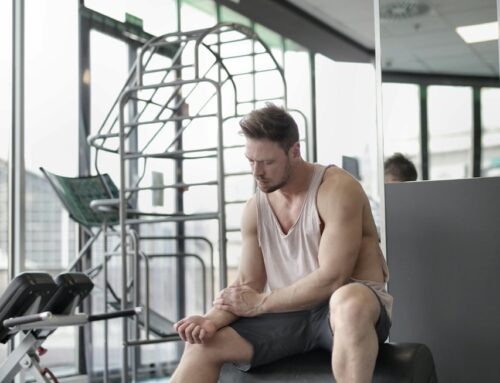Here are 10 facts about lymphatic drainage massage.
- Lymphatic drainage massage focuses on the lymphatic system, the network of vessels and nodes that help remove waste and toxins from the body.
- The massage uses gentle, rhythmic strokes to stimulate the flow of lymphatic fluid, which can help reduce swelling, improve immune function, and improve overall health and well-being.
- It is often used combined with other treatments for conditions such as lymphedema, characterized by swelling caused by a buildup of lymph fluid.
- A trained therapist should perform a lymphatic Drainage massage with specific knowledge about the lymphatic system.
- It is a gentle massage, and it’s not painful.
- It may be performed on the face, arms, legs, abdomen, and other body areas.
- It is also used to decrease the appearance of cellulite.
- It benefits people who have had surgery, especially those with lymph nodes removed.
- It can also be used to enhance the healing process post-injury.
- It may cause a temporary increase in urination as the lymphatic system is stimulated to remove waste and toxins from the body.
Why should I get a lymphatic drainage massage?
There are several causes why someone may choose to get a lymphatic drainage massage:
- To reduce swelling: Lymphatic Drainage massage can help reduce swelling in the body, especially in areas where lymphatic flow may be restricted, such as after surgery or an injury.
- To improve immune function: The lymphatic system plays a vital role in the immune system, and Lymphatic Drainage massage can help improve the function of the lymphatic system, helping the body to fight off infection and disease.
- To enhance overall health and well-being: Lymphatic Drainage massage can improve circulation, increase energy levels, and promote relaxation and well-being.
- To decrease the appearance of cellulite: Lymphatic Drainage massage may help reduce cellulite’s appearance by encouraging the removal of excess fluids and toxins from the body.
- To enhance the healing process post-injury: Lymphatic Drainage massage can help to speed up the healing process after an injury by stimulating the flow of lymph fluid and removing waste and toxins from the affected area.
- To help with lymphedema: Lymphedema is a condition characterized by swelling caused by a buildup of lymph fluid. Lymphatic Drainage massage can help reduce the swelling and improve the overall symptoms of lymphedema.
How can lymphatic drainage massage help with weight loss?
Lymphatic Drainage massage may be able to help with weight loss in several different ways:
- Stimulating the lymphatic system: The massage promotes the flow of lymph fluid, which helps to remove waste and toxins from the body. As the lymphatic system is stimulated, it helps to break down and remove excess fat from the body.
- Reducing water retention: Lymphatic Drainage massage can help to reduce water retention in the body, which can lead to a decrease in overall body weight.
- Improving digestion: The massage may also help to improve digestion by stimulating the movement of the intestinal tract and promoting the elimination of waste products from the body.
- Reducing stress: Stress can contribute to weight gain by causing an increase in cortisol, the stress hormone related to weight gain. Lymphatic Drainage massage can help reduce stress and cortisol, which may lead to weight loss.
- Improving the metabolism: Lymphatic Drainage massage may help improve the metabolism, which can increase the burning of calories, ultimately leading to weight loss.
It’s important to note that Lymphatic Drainage massage alone is not a weight loss solution. It is just one aspect of an overall weight loss plan that should include a healthy diet and regular exercise. It is also essential to consult a healthcare provider before starting any weight loss program.
How often should I receive a lymphatic drainage massage?
The frequency of Lymphatic Drainage massage can vary depending on the individual and their specific needs. Generally, it is recommended to start with a series of sessions, usually once or twice a week for several weeks, then reassess the progress and adjust the frequency accordingly.
- For acute conditions or post-surgery: If you are recovering from a critical illness or surgery, a Lymphatic Drainage massage may be recommended once or twice a week for several weeks to help reduce swelling and improve healing.
- For chronic conditions: For chronic diseases such as lymphedema, it may be recommended to receive Lymphatic Drainage massage 2 to 3 times a week for several weeks, then reassessing and reducing the frequency to once a week or once every two weeks as needed to maintain improvement.
- For general health and well-being: For overall health and well-being, Lymphatic Drainage massage can be done monthly or bi-monthly to maintain the benefits of massage.
- For weight loss: For weight loss, Lymphatic Drainage massage can be done in conjunction with a healthy diet and regular exercise to enhance the results. A session once a week for several weeks, then reassessing and reducing the frequency as needed.
It’s important to note that these are general guidelines, and the frequency of Lymphatic Drainage massage should be determined by a healthcare professional or a massage therapist trained in Lymphatic Drainage. They will consider your needs and medical history before making any recommendations.
How to prepare for lymphatic drainage massage?
Below you can find some steps you can take to prepare for a Lymphatic Drainage massage:
- Please wear comfortable, loose-fitting clothing: It’s best to wear comfortable, loose-fitting clothing that allows the therapist to easily access the areas of the body that will be massaged.
- Avoid caffeine and heavy meals: It’s best to avoid them for a few hours before the massage, as they can stimulate the body and make it harder to relax.
- Avoid lotions and oils: It’s best to avoid using lotions or oils on the skin before the massage, as they can interfere with the therapist’s ability to perform the massage.
- Drink water: Drink water before the massage to help hydrate the body and promote the flow of lymph fluid.
- Inform the therapist of any health conditions or concerns: It’s essential to inform the therapist of any health conditions or problems you may have and any medications you are taking, as this may affect the massage.
- Be open and communicate with the therapist: Be honest and communicate with the therapist during the massage. Tell them if the pressure is too light or strong or if you experience discomfort.
- Relax and take deep breaths: During the massage, try to relax and take deep breaths, as this can help to promote the flow of lymph fluid and enhance the overall effectiveness of the massage.
How to find the best massage specialist for lymphatic drainage massage?
Finding the best massage therapist for Lymphatic Drainage massage can take some time and research. Below you can find some steps you can take to find a qualified therapist:
- Look for a therapist trained in Lymphatic Drainage massage: Not all massage therapists are trained in Lymphatic Drainage massage, so it’s essential to find a therapist with specific knowledge and training in this technique.
- Check for certifications and licenses: Look for therapists certified and licensed by reputable organizations, such as LANA (the Lymphology Association of North America) and NCBTMB (the National Certification Board for Therapeutic Massage and Bodywork).
- Ask for references: Ask the therapist for references from clients who have received Lymphatic Drainage massage, and follow up with those references to get their feedback.
- Check online reviews: Review sites such as Yelp, Google, and Healthgrades to see what other clients have said about the therapist’s Lymphatic Drainage massage services.
- Ask for a consultation: Schedule a consultation with the therapist to discuss your specific needs and concerns, and ask about their experience and qualifications in Lymphatic Drainage massage.
- See if the therapist is comfortable with your condition: If you have a condition such as lymphedema, it’s essential to find a therapist who has experience working with this condition, and that is comfortable with it.
- Trust your instincts: Trust your instincts when finding the best massage therapist. Feeling comfortable and confident in the therapist’s abilities is a good sign that they may fit you.
What should/not do after lymphatic drainage massage?
Below you can find some things you should and should not do after a Lymphatic Drainage massage:
- Do: Drink water to help flush out toxins and waste products from the body.
- Do: Wear loose, comfortable clothing to allow the lymphatic system to flow freely.
- Do: Avoid heavy meals and caffeine, as they can stimulate the body and make it harder to relax.
- Do: Avoid strenuous activity and exercise for a few hours after the massage, as this can put extra stress on the lymphatic system.
- Do: Avoid smoking and alcohol, as they can dehydrate the body and impede the flow of lymph fluid.
- Do: Take a warm shower or bath after the massage to further promote the flow of lymph fluid.
- Do: Rest and relax as much as possible in the hours following the massage to allow the body to continue to process and eliminate waste products.
- Don’t: Take hot baths or use saunas for the first 24 hours after the massage, as the heat can cause the blood vessels to dilate and impede the flow of lymph fluid.
- Don’t: Massage the areas that were treated during the massage, as this can disrupt the flow of lymph fluid and undo the benefits of the massage.
- Don’t: Forget to communicate with your massage therapist and follow their instructions. They know best what is suitable for you and your conditions.




